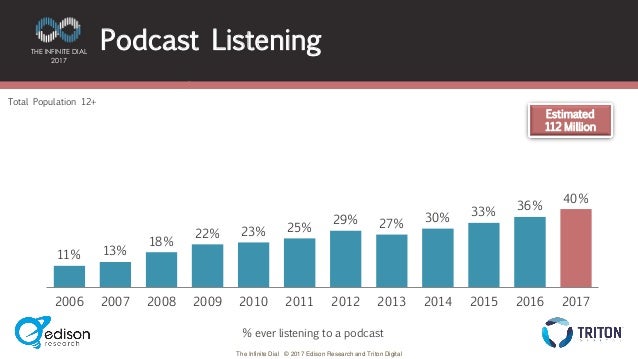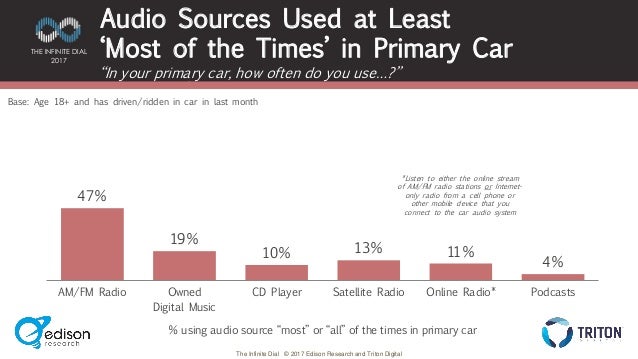How do Radio Stations Make Money?
Most radio stations are free to listen to because listeners are not the customers; they are the product being sold and make up the radio station’s audience. The listening audience, similar to a TV audience and social media users, are the product being sold to advertisers. This is how radio stations make money; through advertising. Extra income also comes from sponsored content and events (however, this is also a form of a advertising) as well as charging callers.
On-Air Advertising
On-air advertising make up a great proportion of radio station’s revenue. Stations sell airtime to companies who want to reach an audience with messages about their products or services. The positioning of advertising spots; the length of each spot; time of day they air; and the show during which the spot airs can each impact its value and price. For example, spots that air immediately after a show moves to commercial or right before the show returns tend to have the highest price. Stations would also charge more for an advertising spot that is aired during a popular show or during peak listening times (e.g. rush hour).
 Online Advertising
Online Advertising
Other types of advertisement can also bring in extra revenue to radio stations. Stations with active and high traffic websites can make a lot of money from placing adverts on their website; this can take the form of banner ads or video ads.
Stations who post a lot of content on social media can also make some extra profit. Stations who post on YouTube (e.g. on-air highlights) can place ads before a video and get money this way.
[themify_box style=”blue”] eBook – A Guide to Getting More Advertisers [/themify_box]
Sponsored Content
Another way for radio stations to make money is by having brands pay radio stations to have radio presenters endorse and promote products/services on air. This is a great way for companies to advertise their products because listeners love and trust their favourite radio presenters and so products will appear more appealing. However, it must be clear to listeners that this content is a commercial arrangement. Branded content can also take the form of an article which radio stations can then publish to their website and share on social media.
Sponsored content is a great way to build brand awareness as stations frequently mention the brand’s name and positioning. Furthermore, over time a positive association of the brand can build in the listener’s mind. Sponsored content also reaches an audience in a less direct way so the audience tends not to think of the message as an advertisement but more as a helpful piece of information.
Charging Callers
One method radio stations use to make extra income is through charging callers. Stations encourage their listeners to call or text in for a chance to be featured on air or to enter a competition. The station then charges a small fee to each incoming caller and makes a profit through this. However, stations must clearly tell their listeners that callers will be charged.
[themify_box style=”blue”] eBook – How to Improve Listener Engagement [/themify_box]
Sponsored Events
Radio stations can also make money through hosting an event or supporting an advertising partner’s event. Not only do these sponsored event attract new listeners, but they also bring in extra revenue through merchandising and ticket sales.
Selling Newscasts
Some radio stations, especially those who focus a lot on news, sell news stories to other stations across the country. This way, the stations who buy the news stories do not need to focus on managing reporters and news anchors etc. to broadcast news updates.
As a radio station, you may choose some or all of the above methods. What you do depends on your station’s positioning, your focus and your audience.
To learn about which approach your station could take, sign up for a free consult here.



 Online Advertising
Online Advertising

 The world is turning to podcasts, which can be listened to anywhere – without requiring data usage or an internet connection. The mobility of podcasts means that listeners are consuming loads of content no matter where they are; the gym; at home or on their morning commute; and yet brands are still thinking that television and print media are the best advertising strategies. Let’s not even mention the fact that people find that ads within a podcast the least intrusive when compared with other types of digital adverts (
The world is turning to podcasts, which can be listened to anywhere – without requiring data usage or an internet connection. The mobility of podcasts means that listeners are consuming loads of content no matter where they are; the gym; at home or on their morning commute; and yet brands are still thinking that television and print media are the best advertising strategies. Let’s not even mention the fact that people find that ads within a podcast the least intrusive when compared with other types of digital adverts (
 ost Effective
ost Effective
 Expedient
Expedient







Why the Panoply Pilot Project will Work Well
April 4, 2017
Podcast company Panoply have launched the Panoply Pilot Project. The project asks listeners to select new shows to turn into a full season. Listeners can offer feedback on each show and also vote for the ones they want to hear as a regular series. Users can vote by subscribing to their favourite podcast on iTunes or voting on their webpage. I can see nothing but positive things resulting from this project, it is a brilliant way to increase listener retention, brand awareness and listener engagement.
Listener Retention

The Panoply Pilot Project has incorporated several techniques to increase listener retention. First of all, a vote is cast when a listener subscribes to their favourite podcast. This means this if this podcast was to win, listeners will see the next episode in their podcast feed without having to actively search for it. The podcast sitting in a listener’s feed will make them much more likely to listen to it as it is already in their mind.
Another way the Panoply Pilot Project will increase listener retention is by sparking their curiosity. Listeners will return to Panoply to find out which podcast has won once the competition is over.
Brand Awareness and Listener Engagement
The listeners who really like a podcast and would love to hear more of it would most likely turn to their friends and family to encourage them to listen in and vote for their favourite. The most passionate listeners might turn to social media to persuade their followers to vote for their favourite; spreading campaign and brand awareness. People will also engage with Panoply’s social media pages by sharing posts or leaving comments; not only increasing brand awareness but also listener engagement.
Feedback
Not only does the Panoply Pilot Project help expand their audience, it is also a way for Panoply to get feedback. It will give Panoply a broader understanding of what their audience wants. Furthermore, the audience reaction will give Panoply a good idea of how successful the podcast is going to be. Panoply chief content officer, Andy Bowers, said “We’re looking at how many people actually do engage and whether it’s a useful way to help us determine what makes a good podcast.”